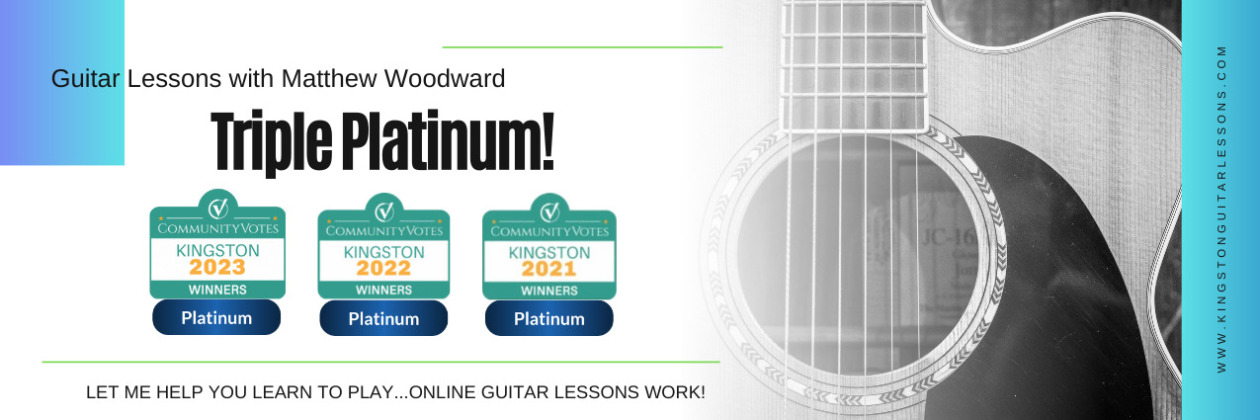It’s likely that many of you are already
familiar with playing scale sequences…
without knowing it.
Scale sequences figure prominently in many exercise texts, often to improve a student’s reading skills or to simply offer them a method with which to practice their scales melodically and with structure. However, the student is usually not given much insight regarding how the musical piece they are playing was designed.
With this post (and those soon to follow) I hope to help you understand how sequences work, and to give you some ideas for how to make up your own.
How They Work
Sequences are quite mathematical by nature and can be applied to ANY scale. For this example I’ll be using the C Major scale.
If we give each note of the scale a number (using the number 8 to represent the Octave of the scale), we can begin to play around with different groupings or patterns that we can apply back to the notes of the scale. (Please note that you can click on ANY image within this post to enlarge it.)


Here’s the basic idea of how we can play a sequence of “fours” through the scale. Begin by playing the first four notes of the scale. Next, leap down to the 2nd note which is, of course, one note higher than where you began. Now play four notes, ascending from the 2nd note to the 5th note. You should now see the pattern we are building. Next, leap back to the 3rd note and climb to the 6th; then from the 4th to the 7th; and finally the 5th to the Octave.


At this point you have made it to the top of the scale. Play the entire sequence as it is and consider its merits as a piece of music. You will probably agree that its melody sounds incomplete – as though one is “left hanging”.
Why? Although we have reached the top note of the scale, the sequence itself is not completed yet. When we listen to a sequence such as this, our brain does its best to quickly process the form or pattern of the notes we hear to help us understand what we are listening to.
We organize musical patterns by listening for when things change. For example, when listening to a motorcycle taking off at a traffic light, our ears notice the moment when the rider changes gear and the motors RPM’s drop and then begin to climb again. It’s the same with our pattern, which is quite easy to understand if you know where to listen for those “gear changes”. 🙂
When you play the first group 1, 2, 3, 4, followed by the leap down to the 2nd note, we hear this as a new beginning, ie. the gear change. Moving up four notes from the 2nd and then leaping down to note 3 establishes a pattern that our brain can grasp easily, and we can can “predict” that the next notes we’ll hear are 3, 4, 5, 6, followed by a leap down to the 4th and so on.
Try playing and singing only the circled notes 1 through 5 of our sequence, which are the first five notes of the melody of the C Major scale. Keep them in your mind. Now try singing the ENTIRE pattern, but focus on the movement of the pattern as it climbs from level to level. Accent (shown as > in Tablature Example C) the beginning note of each new group of four and you should still be able to hear the C scale melody ascending through its first five notes. However, the moment when you reach the octave is when you should feel the pattern ending abruptly musically – and it feels like the melody needs to keep going somewhere.


The sequence sounds incomplete because, although there are 8 notes in our scale, we have started our groups of four on only the first five notes of the scale. To complete the pattern we must extend the scale a couple of notes beyond the octave (and later below the root), as shown below.


In the previous example, when the octave was reached our mind expected another leap down, this time to the 6th. The next run of four notes from there predicts a leap to the 7th. Climbing from there to the 10th, when the final leap down to the Octave happens we feel a resolution (ending) of our melody. We end the pattern here, on the Octave, and do not climb four notes beyond it, because that would also leave the listener hanging, expecting a leap down to the 9th as though we were going to continue the sequence into the second octave of the scale. Below is the completed sequence. Listen to how the last drop to the Octave feels “right”.

The overall movement of this completed sequence of fours is ascending, following a pattern of moving up four notes and then dropping down three to begin again.
You should also try the descending version of this sequence, where we descend four notes from the Octave and leap up three. Now that you understand the numbering concept, I can give the pattern to you using numbers only: (8,7,6,5) (7,6,5,4) (6,5,4,3) (5,4,3,2) (4,3,2,1) (3,2,1,-7) (2,1,-7,-6) (1). Example E shows this sequence using tablature.

In my next post we’ll look at how to develop sequences that are more complex, by manipulating the simple patterns described in this post – applying directional and rhythmic variations…even sequencing the sequence!
Let that be a lesson to you. 😉
Continue learning with “Melodic Scale Sequences, Part II: Pattern Variations”.
If you enjoyed this post, please share it with others using the social media links below. I won’t mind one bit. 🙂
Your comments, corrections or suggestions for future posts are also ALWAYS most welcome.
© 2014 Matthew Woodward


